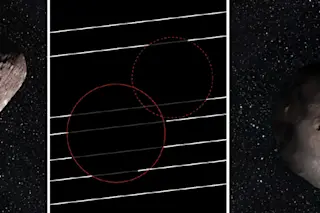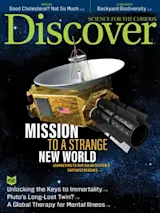On a desolate coastline in Patagonia, astronomer Alan Stern huddles behind a semitrailer to block his telescope from the wind. It’s not long after midnight on July 17 — the peak of southern winter — and 40 mph gusts howl across the landscape.
Stern, who heads NASA’s Pluto-visiting New Horizons mission, is one of 56 scientists with two dozen small telescopes spread for 30 miles along Argentina’s Atlantic coast. Some evade the telescope-shaking wind behind 15-foot-tall steel-framed tarps, built with supplies raided from local hardware stores. A few find shelter in natural alcoves on the beach.
“The conditions were generally miserable for observing,” Stern says. But above, the heavens were crystal clear.
Their celestial quarry: the roughly 14-mile-wide shadow of a world 4 billion miles away, one just discovered a few years earlier. When this ancient object passes in front of a background star, the star’s light dips — like ...















